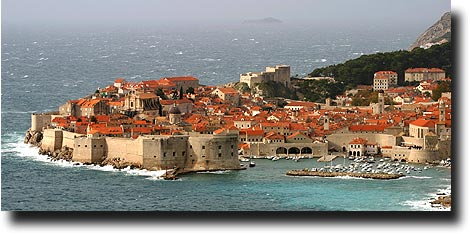

|
|
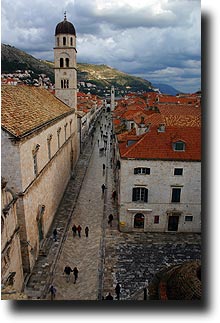
The main street, called Placa, runs through the historic old district (above). Outside of the walls, the sea rushes up against the cliffs on which the town was founded (right). Walking around the city walls gives you an overview of the whole panorama spread out at your feet reaching into the sea beyond (below). |
 |
|
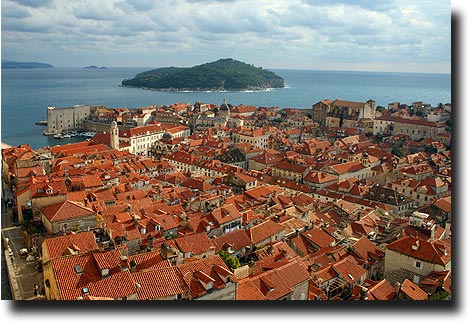 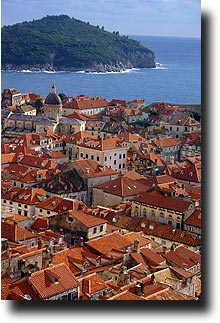 |
||

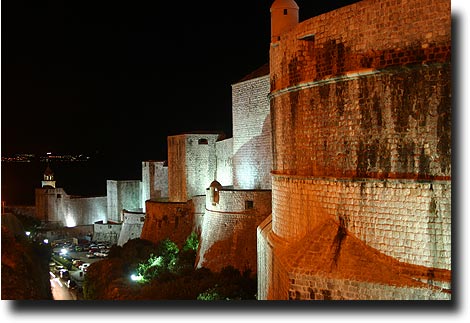
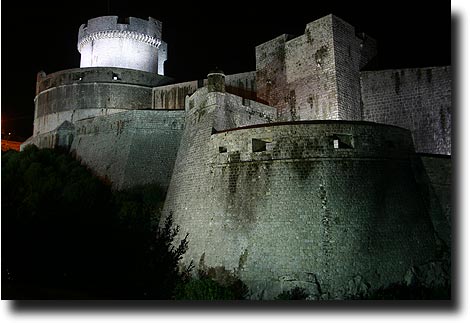 |
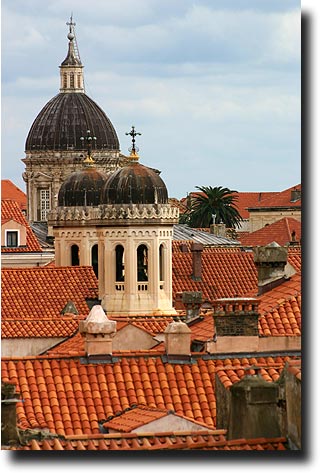
The city walls (3 views at left) were designed to protect the historic city. They didn't help when Serb forces lobbed artillery shells from the surrounding hills during the civil war in the early 1990's. Some numbers we've read estimate that close to 70% of the historic buildings in town were damaged.
|
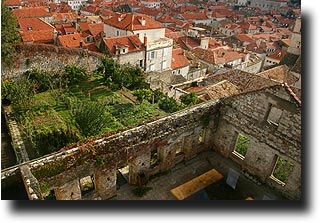
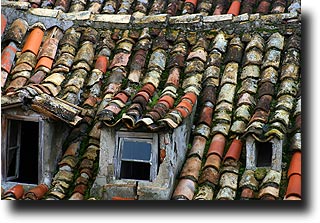 |
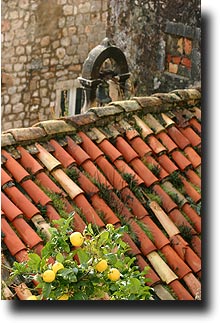
As we wandered around the town, there were definitely reminders of the war. There were overt signs, like the roofless house (with functional garden next door!) at the top right, and the abandoned building just below it. The more subtle hints came from the multicolored roof tiles - as the famous colors were no longer available, when bombed-out buildings were reroofed, they had to be done in a mishmash of shades, with the hope that as time passes they will eventually fade to a more uniform hue. |
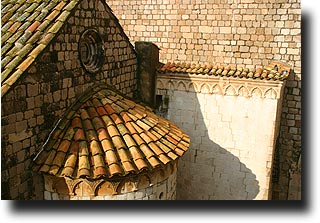 |
This church gives an indication of the color scheme that the city used to be so famous for. |
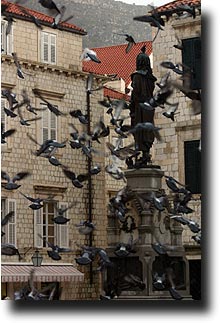 |
 |
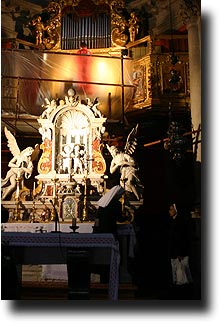 |
||||
|
|
||||||
|
||||||
